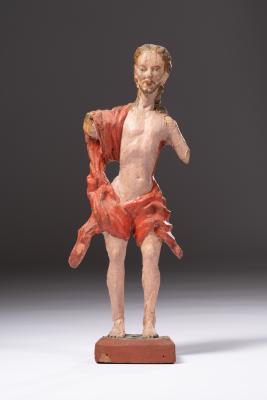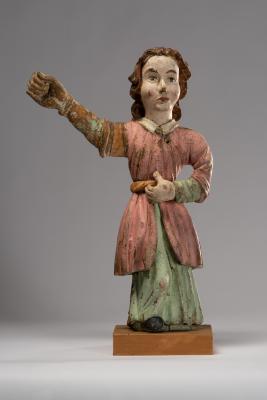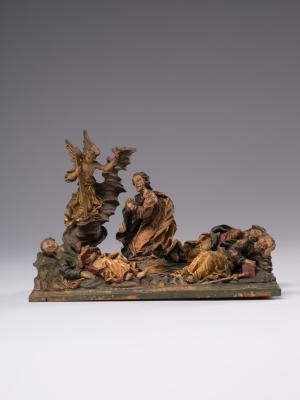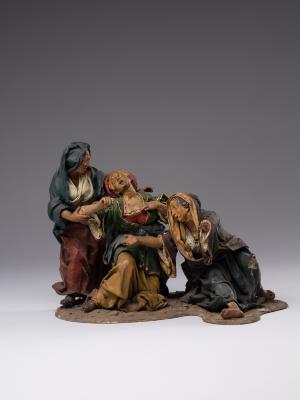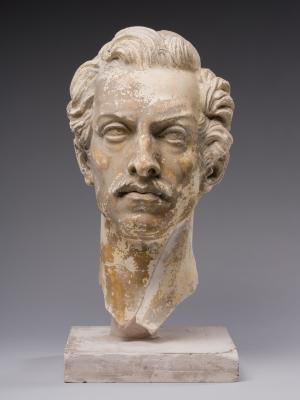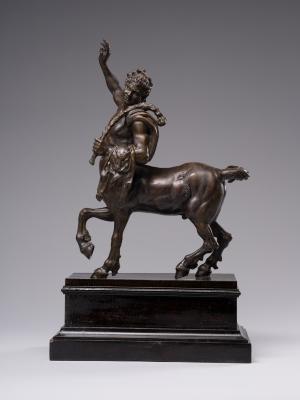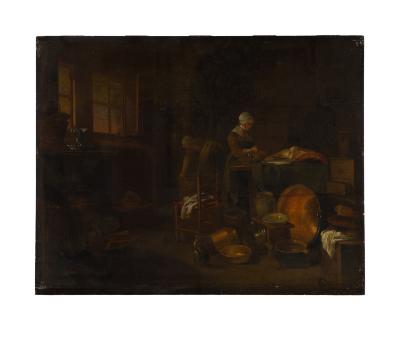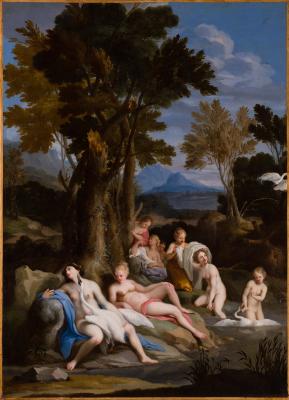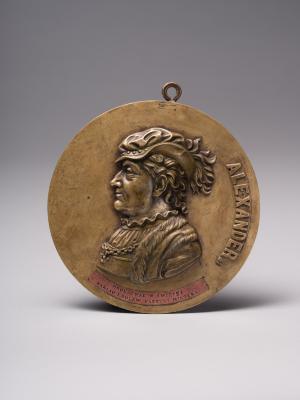The original artistic and spatial solution of the master is the division of the composition into two parts. In the upper part of the painting is an image of Jerusalem from the Mount of Olives, with the inscription - IERUSALEM - at the top. The Old City, where the monuments of world importance (the Mosque of Omar, the Wailing Wall (Western Wall), the Church of the Holy Sepulchre, etc.) are concentrated, is surrounded by a defensive wall, built in the 16th century during the Ottoman Empire by Sultan Suleiman the Magnificent. The mountainous terrain around the town conveys a special flavour of the holy places. The lower part of the painting is a landscape and map of the Holy Land, with mountains, seas, rivers and towns, divided into generations of Israelite generations and complete with corresponding Latin inscriptions. Several biblical scenes are depicted: Christ and the Samaritan Woman, the baptism of Jesus in Jordan by John the Baptist, Christ on the Mount of Olives, the Annunciation, the appearance of Jesus Christ on the Sea of Galilee, etc. The map is framed by small pictorial scenes: to the left are Biblical scenes of the Annunciation and the Nativity, along which is inscribed "MERIDIES" (south) in Latin; to the right, the exterior and interior of the Church of the Holy Sepulchre and "SEPTEN-TRIO" (north); above the map is the inscription "OSSIDENS" (event). Stylistically, the upper and lower parts of the painting are very different: the panorama of the city is drawn more carefully, the map is in the style of folk representational primitive. Above the inscription is a portrait of the Greek philanthropist Hadji Kiriak.








